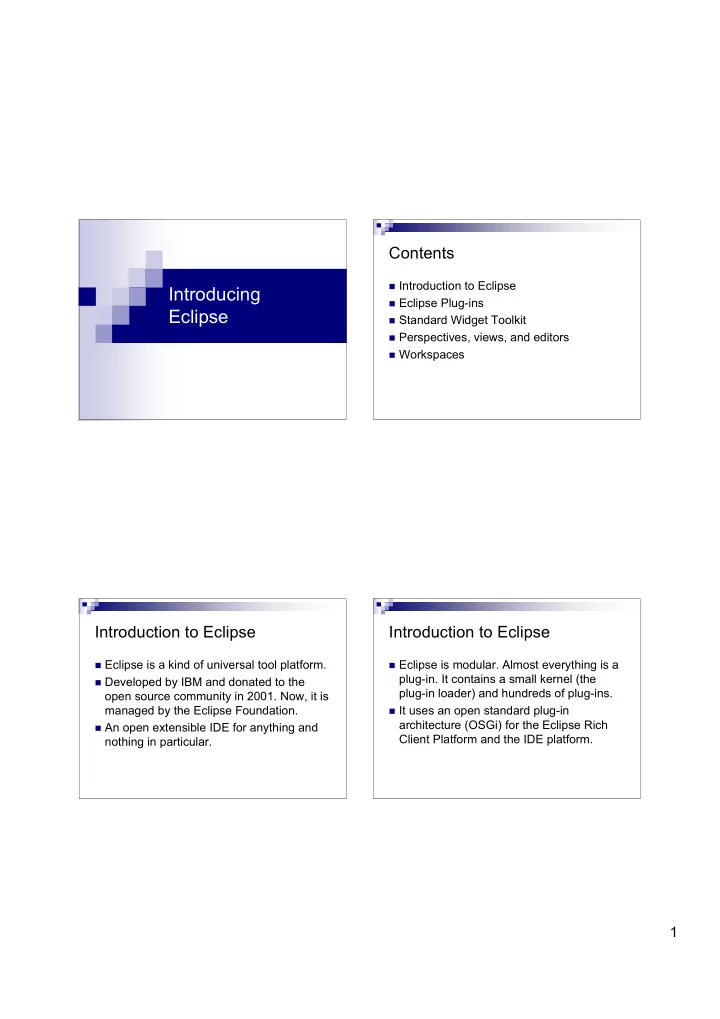

Contents Introduction to Eclipse Introducing Eclipse Plug-ins Eclipse Standard Widget Toolkit Perspectives, views, and editors Workspaces Introduction to Eclipse Introduction to Eclipse Eclipse is a kind of universal tool platform. Eclipse is modular. Almost everything is a plug-in. It contains a small kernel (the Developed by IBM and donated to the plug-in loader) and hundreds of plug-ins. open source community in 2001. Now, it is managed by the Eclipse Foundation. It uses an open standard plug-in architecture (OSGi) for the Eclipse Rich An open extensible IDE for anything and Client Platform and the IDE platform. nothing in particular. 1
Eclipse Plug-ins Standard Widget Toolkit Programming languages: PHP, Perl, Eclipse utilizes the Standard Widget Ruby, Mathematica, etc. Toolkit (SWT), a graphical widget toolkit for Java that uses the native GUI libraries Typesetting: Latex, HTML of the underlying operating systems. Network: SSH client, VNC viewer Pros: fast, native look and feel, small Games: Minesweeper, Tetris system resource usage. Cons: platform specific, not really portable. Perspectives, views, and editors A perspective is a saved layout containing any number of different editors and views. Eclipse ships with a number of default perspectives (Resource, Java, Debug, etc.) that can be customized, or you can create completely new perspectives. Only one perspective is visible at any time. 2
Perspectives, views, and editors Perspectives, views, and editors Views are typically used to navigate Only a single instance of any one view can resources and modify properties of a be open in a given perspective. resource. The currently active view or editor has its Editors are used to view or modify a title bar highlighted. This is the view or specific resource and follow the common editor that will be the recipient of any open-save-close model. global actions such as cut, copy, or paste. Workspaces The Eclipse IDE displays and modifies files located in a workspace. The workspace is a directory hierarchy containing both user files such as projects, source code, and so on, and plug-in state information such as preferences. One user can have multiple workspaces. 3
Recommend
More recommend